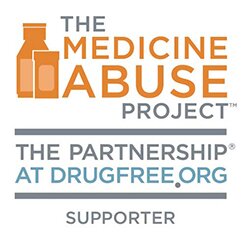| Medication: |
Xanax (Alprazolam) |
| Dosage: |
1 mg |
| Price: |
from $3.00 per pill |
| How to Buy |
Get Started Now |
Xanax (Alprazolam)
Xanax (Alprazolam) is a medication prescribed for mental health conditions, particularly for treating depression, anxiety, neurosis, and panic disorders. It has a well-established track record in medical practice.
Indications
Xanax is used to treat panic disorders, both with and without agoraphobia. Symptoms of panic disorder may include:
- Rapid heart rate
- Sweating
- Trembling or shaking
- Difficulty breathing
- Feelings of suffocation
- Chest pain or discomfort
- Dizziness
- Fainting or loss of coordination
- Numbness or tingling
- Chills
Dosing regimen
Xanax (alprazolam) is prescribed strictly by a doctor, with dosage tailored to the individual based on the specific condition, age, and overall health. The medication is typically taken 2-3 times a day, regardless of meals. The doctor ensures that Xanax is appropriate for the patient and monitors its effectiveness. Individual sensitivity and tolerance are also considered.
The starting dose is generally low, between 0.25 to 0.5 mg per day, which is then gradually increased, first in the evening and later during the day.
For elderly or weakened patients, the initial dosage is typically between 0.25 and 0.3 mg, which may be increased over time.
The dosing regimen varies depending on the condition being treated:
- For anxiety disorders, the starting dose is 0.75-1.5 mg per day, which may be increased up to 3-4 mg per day if necessary.
- For panic disorders, the initial dose is 0.5 mg three times a day, with a maximum daily dose of up to 6 mg.
Xanax is not recommended for long-term use. It is typically prescribed for a few days (e.g., during acute episodes of fear) up to several months. Prolonged use may lead to dependence.
When discontinuing Xanax, the dose should be reduced gradually to avoid withdrawal symptoms such as anxiety or fear. Abrupt discontinuation is not advised, as it can lead to adverse reactions.
Special instructions
Patients with liver or kidney insufficiency should have their condition and test results closely monitored throughout the course of treatment.
In cases of endogenous depression, Xanax may be prescribed alongside antidepressants. However, it is important to be aware that such patients may be at risk of developing manic episodes.
Use during pregnancy and lactation
The use of alprazolam during pregnancy and lactation is contraindicated due to its toxic effects on the fetus. It is particularly dangerous during the first trimester, as it can cause congenital malformations. If taken later in pregnancy, it may lead to central nervous system depression in the newborn.
Using Xanax during or shortly before childbirth may result in respiratory depression, low muscle tone, hypotension, poor sucking reflex, and "floppy infant syndrome" in the baby.
Alprazolam should only be prescribed to pregnant women in exceptional cases when the benefits clearly outweigh the risks.
Use in children
Xanax is not recommended for use in children under 18 years old, as they are particularly sensitive to the drug's depressant effects.
Side effects
- Nervous system: common side effects may include drowsiness, fatigue, dizziness, difficulty concentrating, slow reaction times, disorientation, tremors, and impaired cognitive abilities or memory. In rare cases, paradoxical reactions can occur, such as aggression, fear, muscle spasms, suicidal tendencies, insomnia, heightened agitation, and irritability.
- Hematologic system: possible side effects include leukopenia, neutropenia, anemia, thrombocytopenia, and agranulocytosis, which may present with symptoms like chills, sore throat, extreme fatigue, and fever.
- Digestive system: side effects may include dry mouth, heartburn, nausea, vomiting, diarrhea, and loss of appetite.
- Genitourinary system: [atients may experience either urinary incontinence or retention.
Who should not use Xanax
Xanax is contraindicated in patients with a history of hypersensitivity to alprazolam or any of its ingredients. It is also not suitable for individuals with lactose intolerance.
Alprazolam should not be used in patients with:
- Respiratory failure
- Severe kidney or liver impairment
- Myasthenia gravis
- Acute glaucoma attacks
- Acute intoxication from alcohol, psychotropic substances, narcotics, or hypnotics
Xanax is not approved for pediatric use. It should also not be prescribed to individuals with alcoholism, as the consumption of alcohol or products containing ethyl alcohol is prohibited during alprazolam therapy.
Patients taking Xanax should avoid activities requiring high concentration and quick psychomotor responses.
Alprazolam is strictly prohibited during pregnancy and lactation. Women of childbearing age should confirm they are not pregnant before starting therapy and use reliable contraception. If pregnancy occurs during treatment, a doctor should be consulted to create a withdrawal plan and evaluate potential risks to the fetus.
Alcohol and Xanax
It is strictly prohibited to consume alcohol during treatment with alprazolam, as this can lead to serious negative effects. This rule applies to nearly all medications in this class. Any alcohol-containing products must be avoided during therapy.
Abrupt discontinuation of Xanax can result in severe withdrawal symptoms, and in extreme cases, may even be life-threatening. Therefore, it is essential to follow proper precautions and gradually taper the medication to avoid withdrawal symptoms when discontinuing treatment.
Overdose
Excessive intake of Xanax, particularly doses exceeding 500 mg at once, can result in a range of serious side effects. These may include confusion, extreme drowsiness, impaired coordination, involuntary eye movements (nystagmus), reduced reflexes, speech difficulties, elevated blood pressure, and in severe cases, coma.
In the event of an alprazolam overdose, immediate gastric lavage and the use of enterosorbents are recommended to reduce the drug's absorption. Supportive care may also be required to stabilize cardiovascular and respiratory functions.





